Does your reader sometimes sound like he’s just saying a string of words? Is it sometimes choppy? This can happen to all kinds of young readers, especially struggling readers.
Instead of focusing on reading fluency and phrasing, struggling readers are often just trying to make sure they can say all the words correctly.
Last week, The Measured Mom shared a simple tip for reading fluency from our Struggling Reader Series and today, I’m sharing a multi-sensory tip that has dramatically changed my son’s reading fluency and phrasing.

*This post contains affiliate links.
Reading Fluency
Before I get to this awesome tip, I want to first share three quick thoughts about reading fluency.
1. Fluency gets better the more learners read the same text. Just like making music of out notes on a page, fluency takes practice. This is especially true for struggling readers.
2. Fluency will be a struggle if the text is too difficult. A huge part of fluency is being able to read the words automatically and accurately. If the words are too difficult, fluency will be compromised. If you want to really zero in on fluency, find a text that is almost too easy. This takes the brain off figuring out the words and on to fluency.
3. The ultimate goal of fluency is better comprehension. Incorrect phrasing and a slow rate of speed can impede comprehension, especially as texts get longer.
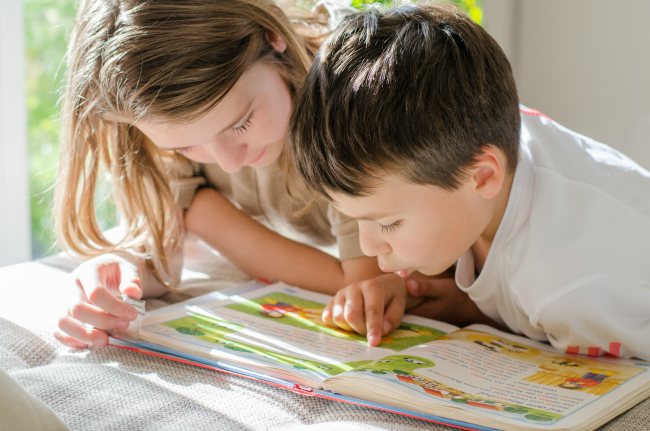
Scooping Phrases and Reading Fluency
Are you ready for something totally cool? Introducing scooping phrases! Instead of pointing to each word {which some older struggling reader still do}, readers are encouraged to “scoop” their finger under groups of words to form phrases within the sentence.
To use scooping phrases, pull out a sentence or two of text from your learner’s reading {see images below}. You can also just make up your own sentence. The key is that (s)he knows how to say all the words so you can focus primarily on phrasing.
Your introduction might sound something like:
Sentences look like a string of words all put together. But really, sentences have groups of phrases that are said together to help us better make meaning of what we read. Let me show you how.
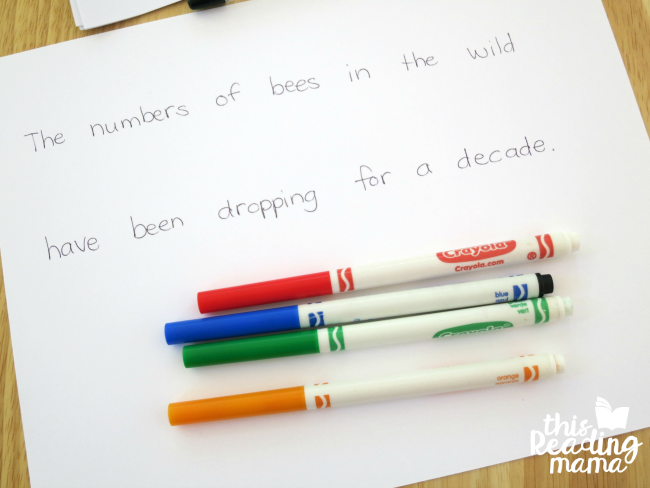
I’m going to read this sentence word by word. {Read in a choppy way.} That sounded a little like a robot, didn’t it? Rather boring.
Now, I’m going to think about how I would say it if I were speaking the words instead of reading them. {Read with expression and phrasing. My sentence sounded more like: “The number of bees…in the wild…have been dropping…for a decade.” I only put a very, slight pause in between the phrases.}
That was better, right? Were you able to tell what I did?
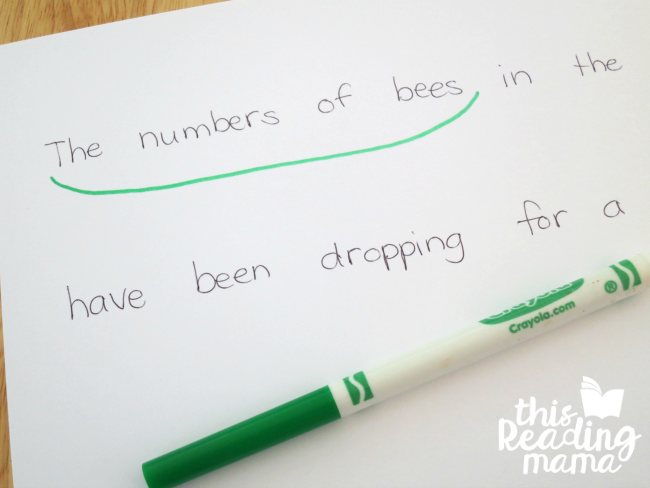
One thing I did differently was group the words into phrases. This is called phrasing. I’m going to draw scooping phrases to show how I grouped the words together to make it sound like I was talking instead of reading. Note: There’s not always one correct way to scoop the phrases.
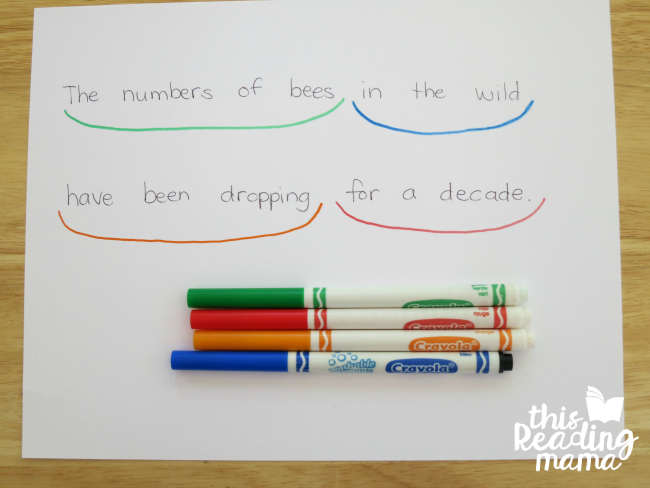
{I like to draw my scooping phrases in different colors, but you certainly don’t have to.}
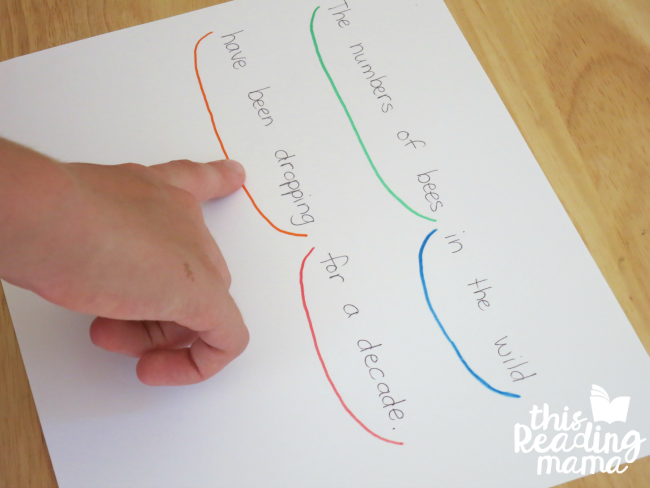
This time, I’m going to read the sentence again, and scoop my finger under each phrase as I read. Now, you try it.
Scooping phrases work so well for struggling readers because it’s multi-sensory. Students are visually reading, orally speaking, and physically touching all at the same time!
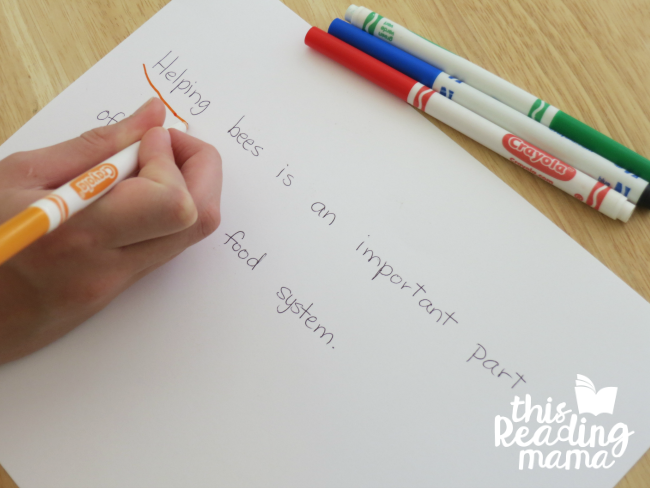
Once your learner feels comfortable with the idea {my son’s been doing it for months}, you can set him free to draw his own scooping lines as he practices reading fluency.
Want an EASY way to practice reading fluency with scooping phrases?
Then, you’ll love my K-2 Fluency Cards!
My K-2 pack has 200+ fluency cards that get learners
1- saying the sentence,
2- scooping the phrases, and
3- reading the phrases with different emotions… all parts of learning to read with fluency! Cards WITH scooping phrases and cards WITHOUT scooping phrases are included.
$10.00Add to cart
Or get them at my Teachers Pay Teachers Store!
You Might Also Like
Modeling and Teaching Fluent Reading
Reading Fluency and Expression with Poetry
Reading with Fluency: Struggling Readers
Find all the posts in this Struggling Reader Series:
~Becky
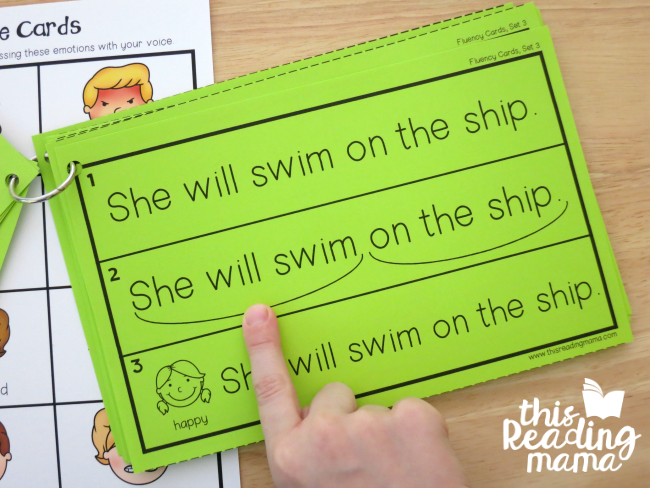





I LOVE this! Scooping phrases are new to me. So easy to set up and do, and your pack looks fantastic!
Thanks, Anna! 🙂
This is a great technique to use for building fluency. The fact that it is multi-sensory makes it even better. I know many teachers in 1st and 2nd grade that use this daily in the classroom. Thanks for sharing. Great website and tips!
Thanks! 🙂
I was so excited to come across these! My district uses Fundations and they teach fluency by scooping the phrases. This is such a useful tool to have. Thank you!
The fluency scooping really works. I am wondering when you will come out with a 3-5 grade level.
It’s on my “to create” list! 🙂
I love this. I used to use this technique when I used the Wilson Reading program. Will you consider making some for the students who are in interventions that are older like 3rd and 4th grade level? Your expertise is so helpful!
This has been on my “to do” list for nearly 2 years and I do hope to get around to it someday. 🙂
Seems like you are already working on teaching children with learning disabilities to read. This is a great strategy to help them be successful and feel more confident reading. Thank you so much.
You’re welcome! 🙂
Hello reading mama. I am a teacher for grades 1 to 3. I have struggling readers in my class. I want to help them. How much to subscribe?
Marrebeth
Subscribing to my blog is free. 🙂
Oh my God thankyou. I was trying to make sense of education department information on phrasing and got no clear ideas on what it was or how to do it. Literally 1 minute into reading your information I heaved a sigh of relief. Finally something I could make sense of. Wonderful
I’m so thankful you were able to find what you needed. 🙂